Balancing Quality and Quantity in Content Marketing: 6 Effective Tips + 7 Great Examples

Content marketing is an exceptionally effective (and budget-friendly) strategy for helping you grow your business.
Just look at the pros of investing in content creation and distribution. You’ll find that producing great content that attracts and engages your target audience offers multiple benefits. These include a significant increase in brand and product awareness. Moreover, the right piece of content can also help you boost conversions, increase customer loyalty, and promote a more positive brand reputation.
To enjoy all of these advantages that content marketing offers, keep in mind that you won’t yield impressive results with just any example of written or visual content.
Instead, you’ll want to develop a strategic approach to creating posts that answer your target audience’s questions, position your business as a credible industry authority, and help your prospects solve their pain points. In other words, publishing more won’t necessarily yield better results.
So, if you need help balancing quality and quantity in content marketing, here are the most effective tips to implement, along with some examples from which to draw inspiration.
Prioritize Reader Value
One of the best ways to win over your audience with content is to approach the production process by asking yourself: “How can I create resources that genuinely benefit my prospects?”
You see, the key to impressing consumers isn’t making remarkable claims. Instead, it’s showing your audience that you care about their needs and are willing to do what it takes to remove their pain points.
If you look at one of Adobe’s studies from 2023, you’ll discover that almost nine out of ten consumers want to engage with brands that are working hard to meet their expectations. Moreover, 56% feel more loyal to businesses that demonstrate an understanding of their prospects’ priorities and preferences.
So, as you search for an equilibrium between producing more content vs. focusing on quality, try giving as much significance to quality and reader value as possible.
Really consider your audience’s pain points. Explore ways to help them solve their needs. Most importantly, don’t fall into the trap of thinking that providing a solution will rob you of your chance to convert a new customer. On the contrary, it might just be what it takes to win your prospects’ trust and maximize their chances of buying one of your products.
For a great example of a business that puts customer needs first, check out Classical Guitar Shed. Knowing that its target audience wants easily accessible learning material, this brand allows anyone to download its free ebooks, with each offering sheet music, tips and tricks, or beginner instructions.
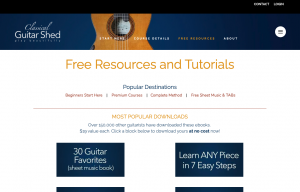
Source: classicalguitarshed.com
Understand That Longer Posts May Perform Better
Even though quality trumps quantity in content marketing, you must understand that investing in long posts offers tremendous benefits — particularly when focusing on producing and distributing articles.
Research shows that longer posts (containing 1,500 words or more) tend to outperform their shorter counterparts. According to research from Backlinko, the average word count for a first-page Google result falls at 1,447 words, while posts that exceed the 1,000-word mark tend to receive more backlinks and social shares.
Now, this isn’t to say that the best tactic to maximize the reach of your written content is to fill your articles with fluff. Nonetheless, the data above proves that in-depth resources tend to outperform posts that only scratch at the surface of a topic. They’re simply a more convenient way for consumers to research topics and tend to offer more value.
So, how do you use this data to inform your marketing tactics? When producing content, consider how much value you can pack into your posts.
Ultimately, an in-depth buyer’s guide or instructional article — like the Essential Guide to Motorcycle Packing by Moto Machines — will allow you to present your readers with more valuable information than a short, 700-word article only covering the basics.
Keep to a Consistent Posting Schedule
When it comes to areas where quantity outperforms quality (or at least allows quality content to reach its maximum potential), don’t forget to consider your posting schedule.
Essentially, having a posting calendar ensures you deliver new and relevant content to your audience consistently. Furthermore, if you’re distributing content via social media, sticking to an invariable schedule could help your posts be favored by the algorithm.
Of course, not all social networks work the same (just as they don’t cater to the same audiences). So, understanding how often you need to publish new content may take trial and error.
A good rule of thumb is to prepare one to two daily posts for platforms like Facebook, Instagram, and TikTok. Nonetheless, if you’re mainly targeting consumers on LinkedIn, YouTube, or your brand’s blog page, keeping to a single longer-form post per week is probably enough to ensure your work reaches your audience.
If you’re still confused about how much you should post, one easy way to develop an effective content distribution strategy is to research your audience’s online behavior. Explore the analytical data available to your business. Check when your followers are online and active. And try to align your schedule with their behavior.
Bring on Some Expert Help
Another excellent tactic to guarantee your prospects receive tons of value from your content marketing efforts is to approach the creation process by understanding that your audience probably wants an expert opinion.
In the era of ubiquitously available search engines and AI tools, anyone can look for and discover information. But, what businesses tend to overlook in the debate of quality vs. quantity is that consumers don’t want just any piece of data. They want guidance they can trust.
So, if you want to put your hard-earned marketing budget toward content that will benefit your brand’s reputation and help your potential customers, acknowledge your audience’s hunger for authentic, proof-based resources.
For example, the most recent research about trust discovered that approximately three-quarters of people trust scientists as much as peers. Why? In a world where the media is biased and institutions act unethically, people need proof that they’re being served with correct information.
So, to present your audience with quality content, consider ways to bring on outside (trustworthy) voices that will back up your brand’s claims.
For instance, you can take inspiration from NatureMade’s Ultimate Guide to Daily Vitamins. The article doesn’t just contain references to scientific research. The top of the page also includes info about the people who wrote and fact-checked the post to demonstrate the brand’s commitment to presenting customers with quality information and advice.
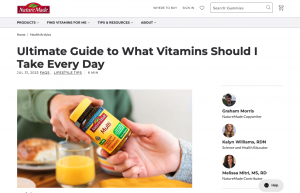
Source: naturemade.com
Or, if your brand doesn’t operate in an industry where expert opinions are prevalent, you can still show your audience that you approach the content creation process by prioritizing trustworthiness. Something as simple as incorporating user-generated content (in whatever format) can be a superb way to back up your claims and present prospects with evidence of your brand’s credibility.
For inspiration, check out Notion. This SaaS brand has an entire Template Gallery section on its website featuring user-submitted creations. The role of this page isn’t just to present prospects with valuable content they can use in their personal workflows. More importantly, this example of UGC demonstrates the full capability of Notion’s software and shows that anyone can master the software, regardless of their background and experience.
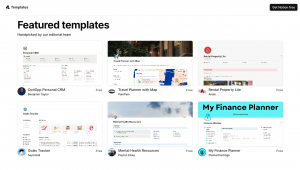
Source: notion.so
Or, if you can’t source enough UGC to make it a consistent part of your content marketing strategy, go with candid, authentic content.
If you check out the How Long Wooden Playhouses Last article on the Whole Wood Playhouses site, you’ll see that it includes several on-location photos of the brand’s team. Their purpose is to give potential customers an unfiltered view into the set-up process for the brand’s products. The photos are also extremely valuable for expectation management. They show customers what to expect from their purchase by presenting them with real-life snapshots instead of staged product photos.

Source: wholewoodplayhouses.com
Make Your Content Easy to Consume (Even When Covering Complex Topics)
Regardless of whether you decide to focus on content quality or quantity (or, ideally, both), understand that your marketing efforts won’t amount to much unless the posts you publish are user-friendly.
UX/UI design is crucial for creating a shopping experience your prospects will enjoy.
However, the one thing many business owners overlook is the fact that content has to be enjoyable for it to deliver the outcomes you desire.
Not convinced? Just consider that 59% of people want to consume beautiful content. Moreover, remember that 40% of internet users stop interacting with content that’s slow to load or doesn’t display well. Finally, understand that most people don’t read online content, choosing to scan it for relevant info instead.
With this in mind, one of the best ways to make your content more engaging and valuable (regardless of length) is to make it easy to consume for your audience.
In addition to adhering to the basic best practices of prioritizing text readability, explore additional ways to make your posts deliver more value.
For example, something as simple as incorporating visuals, videos, or interactive features — like the ones on the Businesses for Sale in Sydney page below — can make your content exponentially more valuable to your audience.
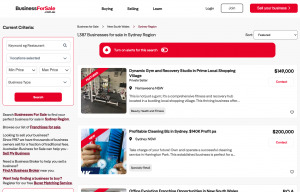
Source: businessforsale.com.au
Make Your Work Go Further by Repurposing and Promoting
Don’t fall into the trap of thinking you need to publish new content all the time if you want your brand to stay relevant.
In fact, it is more than possible to focus on creating quality content and still reap the benefits of a consistent and packed posting schedule if you master the art of repurposing and promoting existing resources. To do this, you’ll have to approach the publishing process tactically.
For example, if you’re working on an in-depth resource you know your audience wants, think about ways to make it reach the widest audience possible. Start by teasing the upcoming release with a post on social media or a mention in your newsletter. Then, distribute across multiple platforms on the day of publishing, ensuring that you get as much organic traffic as possible. Finally, to squeeze the most out of the piece, consider ways to repurpose it.
You might do something akin to Gallup. This organization uses its Instagram presence almost exclusively to present followers with snippets of data from its past research. The reason this approach works is that not all potential prospects will see your posts the moment you hit the “Publish” button (or be at the stage of the buyer’s journey where they find the info relevant). So, by re-posting and repurposing, you’re essentially giving your content a new life and allowing it to continue contributing to customer acquisition even weeks, months, or years after it was first posted.
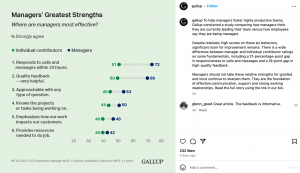
Source: instagram.com
Final Thoughts
If you’re looking to enhance your content strategy, know that you don’t have to choose between quality and quantity.
Instead, to create resources that will benefit your business, consider what your target audience needs at every stage of the sales funnel. Then, take your time creating valuable, user-friendly resources. And don’t be afraid to re-use work from the past. After all, if you’ve put enough effort into it, it’s likely to be relevant, engaging, and conversion-inspiring — even if it’s not the latest post on your site’s Blog section.
